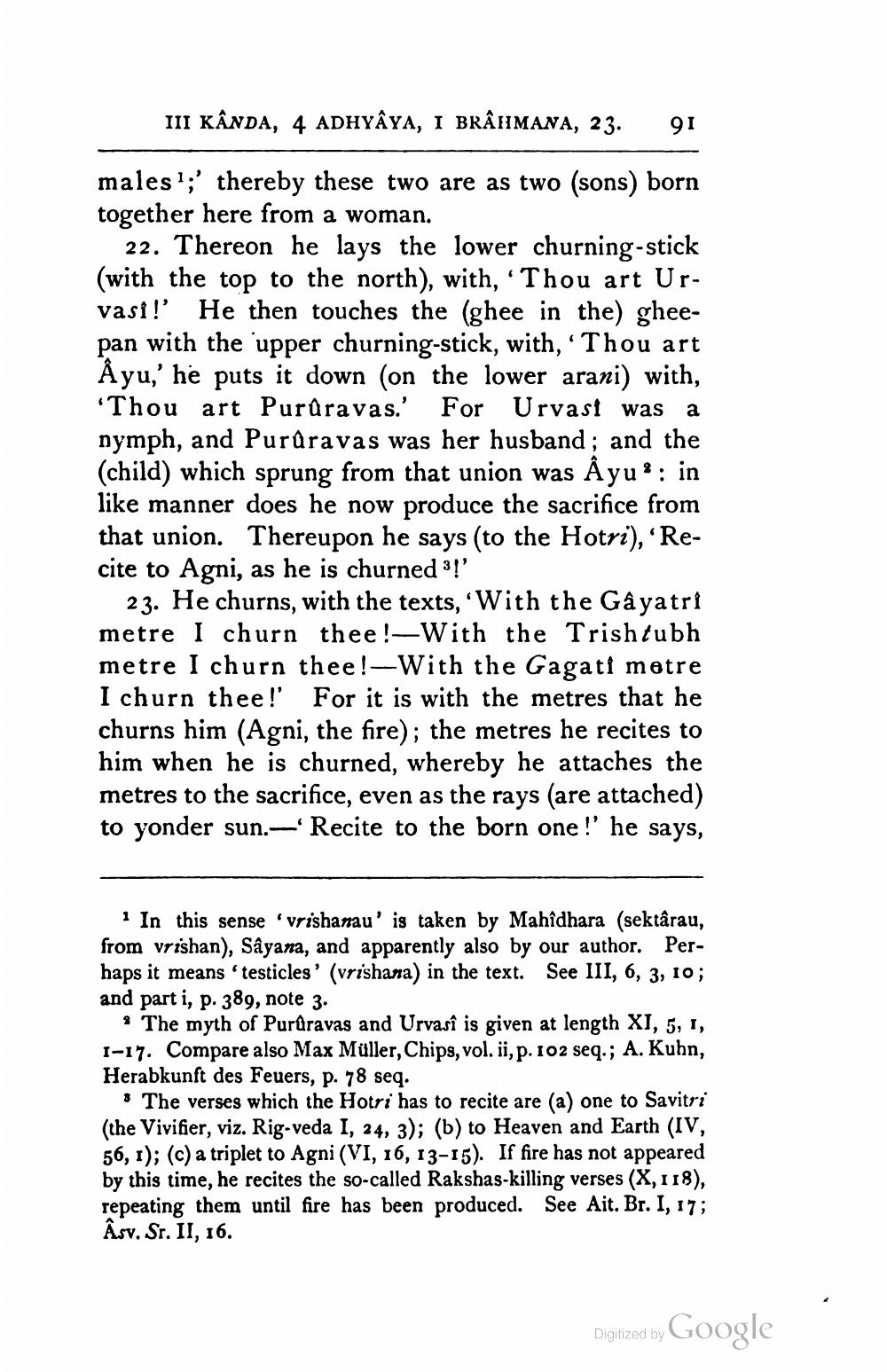________________
III KANDA, 4 ADHYAYA, I BRAHMANA, 23.
males; thereby these two are as two (sons) born together here from a woman.
22. Thereon he lays the lower churning-stick (with the top to the north), with, 'Thou art Urvasi!' He then touches the (ghee in the) gheepan with the upper churning-stick, with, 'Thou art Âyu,' he puts it down (on the lower arani) with, 'Thou art Purûravas.' For Urvast was a nymph, and Pururavas was her husband; and the (child) which sprung from that union was Âyu2: in like manner does he now produce the sacrifice from that union. Thereupon he says (to the Hotri), 'Recite to Agni, as he is churned 3!'
23. He churns, with the texts, 'With the Gayatri metre I churn thee!-With the Trishtubh metre I churn thee!-With the Gagati metre I churn thee!' For it is with the metres that he churns him (Agni, the fire); the metres he recites to him when he is churned, whereby he attaches the metres to the sacrifice, even as the rays (are attached) to yonder sun.-' Recite to the born one!' he says,
91
In this sense 'vrishanau' is taken by Mahîdhara (sektârau, from vrishan), Sâyana, and apparently also by our author. Perhaps it means 'testicles' (vrishana) in the text. See III, 6, 3, 10; and part i, p. 389, note 3.
The myth of Purûravas and Urvasî is given at length XI, 5, 1, 1-17. Compare also Max Müller, Chips, vol. ii, p. 102 seq.; A. Kuhn, Herabkunft des Feuers, p. 78 seq.
The verses which the Hotri has to recite are (a) one to Savitri (the Vivifier, viz. Rig-veda I, 24, 3); (b) to Heaven and Earth (IV, 56, 1); (c) a triplet to Agni (VI, 16, 13-15). If fire has not appeared by this time, he recites the so-called Rakshas-killing verses (X, 118), repeating them until fire has been produced. See Ait. Br. I, 17; Âsv. Sr. II, 16.
Digitized by
Google




